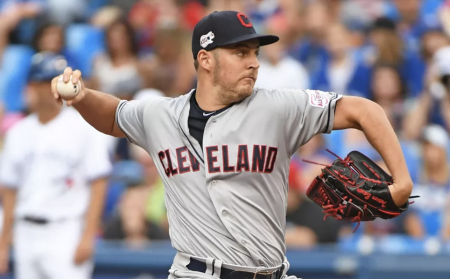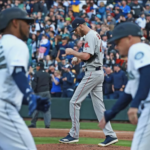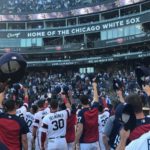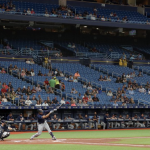MLB Trade Deadline Leads to Tough Decisions
 In less than a week, some general managers will feel compelled to look one last time at their cards, lay them down on the table, and make some tough decisions as the MLB trade deadline approaches.
In less than a week, some general managers will feel compelled to look one last time at their cards, lay them down on the table, and make some tough decisions as the MLB trade deadline approaches.
Do I, or don’t I, make that trade?
Some GMs are holding such strong hands they can buy whichever player they want, despite the steep asking price. Some are bluffing. While still others will compromise and unload middling players just to clear the decks and show fans they’ve done something.
In the end, it’s a matter of price. And belief. Is it the right move? Or should a team wait and hold on in the (mistaken?) belief time will improve their players and afford them a better chance to win next season? It depends what a GM believes.
Because tough decisions are sometimes unpopular, Brodie Van Wagenen is still being (rightfully) charcoaled for his choice to trade top prospects to Seattle. And for assets the Mets did not need. For this reason, it may be a trade that haunts the Mets for years to come. Especially if Jarred Kelenic becomes a star.
Sellers will believe, until time proves otherwise, that pieces received in trade will make their teams better in a year or two, or maybe sooner. Wrong, Brodie Van Wagenen. Edwin Diaz and Robinson Cano have not made the Mets any better, perhaps even … worse.
The Unknowns
And while it will all sound reasonable, when the trades are made, most fans won’t know who the prospects are, despite hearing their names. Like charms on a bracelet.
They’ll be unknowns. Like Yoan Moncada (traded to Boston for Chris Sale), or Michael Fulmer (traded to Detroit for Yoenis Cespedes), or Gleyber Torres (traded to the Yankees for Aroldis Chapman), or Austin Meadows (traded to the Rays for Chris Archer). All these prospects have since become productive major leaguers.
Tough decisions, realized.
Then there were trades like the Hunter Pence deal in 2012, when Pence was sent to the Giants in exchange for Nate Schierholtz, Tommy Joseph and Seth Rosin. None of the players the received by they Phillies delivered an impact, while Pence was a key player on the San Francisco Giants’ 2012 and 2014 World Series teams.
Sometimes, fans fear their favorite team will trade its best player for players who will embarrass the team. Players who will not make the majors. And a transaction that will be referred to again and again as one of the worst trades ever. It happens.
Who were Steve Henderson, Doug Flynn, Pat Zachary and Dan Norman? When were they traded? And who were they traded for? (At least they all played in the major leagues at one time or another.)
The answer: The Cincinnati Reds traded them to the New York Mets (of course, who else?) for Tom Seaver. This trade qualified as an embarrassment. As highway robbery. As one of the two worst trades the Mets made in the 1970s. The Nolan Ryan trade was the other embarrassing deal that kept galling the Mets for 20 years after it was completed. Both trades put the Mets at a competitive disadvantage for a decade.
MLB Trade Deadline Approaching
In prior seasons, organizations could make a July 31 bet, and then rethink and make a second move, either slipping a player through waivers, or trading for a player who had been slipped through waivers, as long as the transaction closed by August 31.
But this year, the August revocable waiver trade period was eliminated. So, there will be no August trades.
This is causing headaches as general managers must make educated guesses about their team, the imminent future of competition, and what their roster may need most, all by the MLB trade deadline on July 31.
And as this process has unfolded, even now, teams in the wild card chase are jockeying for position, and a few, like the San Francisco Giants and Cleveland Indians, have seen their fortunes change (for the better). As a result, they have changed their positions on moving frontline pitching. Although the questions are not merely strategic. They are financial as well.
Trading Trevor Bauer
Trading a pitcher like Cleveland’s Trevor Bauer, due $20 million or so next season (it’s an arbitration award, not a firm number) will not only save the Indians his 2020 arbitration salary (Bauer will not be a free agent until 2021 at the earliest), but possibly replace him with young, controllable assets, who, collectively, may earn the major-league minimum their first three seasons in MLB.
With the fourth season, a prospect becomes eligible for arbitration raises over the coming three years, just as Bauer is now. So, it’s possible Cleveland could receive two or three solid prospects, who, for their first six seasons, might earn in the neighborhood of $20 million or so, combined. And, if they’re solid performers, they could not only transform the Indian franchise and save the Indians lots of money but earn a substantial sum themselves.
While Bauer is a top of the rotation starter, as the 2021 season begins, Bauer will begin his age 30 season. Chances are the length of the contract, not the value per season will be the issue. So, whoever acquires him will have to trade a bounty for the chance to control Bauer for a year and a half (two postseasons) before he becomes a free agent. Not only is it a tough decision, and a pricey one, but it may also be short-lived.
Getting it Right
Over the years, since the first National League trade in 1886, great players have been traded whose movement changed the course of seasons. Consider Baltimore’s acquisition of Frank Robinson from the Cincinnati Reds in December 1965. At the end of the 1966 baseball season, Robinson won the American League MVP, the Triple Crown and led the Orioles to a 4-0 sweep of the Dodgers in the World Series. All this for Milt Pappas and two other nobodies.
More recently, the Mets acquired Yoenis Cespedes from the Detroit Tigers in July 2015, and he became the catalyst who energized them past the Washington Nationals into the 2015 World Series.
So, as the MLB trade deadline approaches, this next week will surprise, excite, disgust and rejuvenate fans, players and teams alike. A lot of tough decisions will be made. But for one lucky team, a championship may hang in the balance.

























